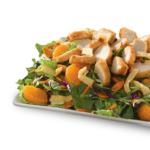Dieters can reach their weight loss goals with soluble and insoluble fiber, which creates feelings of fullness and biochemically affect the body to promote fat loss.
Of the many fat-burning foods, fiber may be one of the best. The fiber in both insoluble and soluble forms can assist in a weight loss diet and help dieters reach their goals.
Soluble and Insoluble Fiber in a Weight Loss Diet
Fiber comes in two forms, and they both work to help dieters lose weight. The two types of fiber are:
Soluble Fiber Sources– Found in fruits, vegetables, nuts, seeds, oatmeal, and beans, soluble fiber helps dieters by slowing digestion. This kind of fiber can dissolve in water and interacts with other components of food to help weight loss.
Insoluble Fiber Sources – Found in fruit and vegetable skins, whole wheat grains, nuts, and seeds. This kind of fiber does not dissolve in water and passes completely through the digestive tract unchanged, making dieters feel full.How Fiber Nutrition Works to Help Weight Loss
Fiber works in many ways to help dieters lose weight. One function of fiber is to cause feelings of fullness. This works because fiber displaces other foods and takes up more space in the digestive tract than other types of foods, making dieters feel full even though they have eaten fewer calories.
Another way fiber works are by causing fat and sugar absorption to slow down. Soluble fiber, in particular, can slow the absorption of sugar and prevent the rapid changes in blood sugar and insulin levels that lead to dietary fat being stored as body fat.
Components of A High Fiber Weight Loss Diet
Dietary fiber includes many different substances that cause the same health effects. Some of the components in fiber that help weight loss include:
Cellulose is part of the cell wall of plants; this component of fiber helps bulk up digested food in the intestines.
Hemicellulose is a component similar to cellulose but made of different types of sugars that the body cannot digest or can only partially digest.
ß-glucans are another plant cell wall component that acts to lower cholesterol and regulate blood sugar and insulin levels
Pectin is a soluble fiber that holds large amounts of water, increasing fullness. It also regulates blood sugar and may lower cholesterol.
Mucilage is a type of soluble fiber that is completely absorbed by the digestive system and induces the intestines to produce chemicals that help keep the digestive tract healthy.
Gums are another soluble fiber, similar to pectin and mucilage, with the same effects.
Lignin is a type of insoluble fiber, the only one not made of carbohydrates, that helps increase the bulk of stool in the intestines.Healthy adults should eat 20-35 grams of fiber each day, with a mixture of both insoluble and soluble fiber from a variety of foods to create an effective high fiber weight loss diet.





